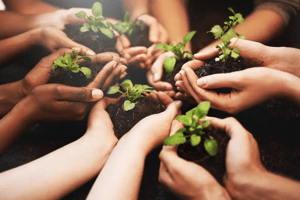Continuous Succession Planning: No More Excuses
This is part five of a series of posts based on what I learned at the IAMPHENOM conference.

This is part two of a series of posts based on what I learned at the IAMPHENOM conference.
After Mahe Bayireddi kicked things off on day one, Safi Bahcall, award-winning author of “Loonshots,” gave a keynote address that was an eye-opener for all and so appropriate given today’s climate of rapid change. There is no doubt that the recent advances in generative AI represent a shift as significant as when the Internet emerged in the late 1990s. Businesses will need to reinvent their day-to-day operations to stay competitive and those who do not will suffer the consequences like those who simply promoted existing business models and put up web pages. Anyone remember Blockbuster?
According to Bahcall, the organizations that survive in rapidly changing times are those who systematically run experiments to see what could work, and what doesn’t. He emphasizes that experimentation is what allows companies to adapt, innovate, and thrive in today’s dynamic business environment, and it needs to be OK to fail.
I loved his stories about how Amazon, which was great at selling books online and not a tech company by any stretch, ended up dominating the Cloud Computing business. Their experiments on bundling customer-centric services and support paid off in a big way. Does Google even have customer support? But here is where it gets interesting. Do you remember when Amazon launched the Fire Phone? Nope, me either. After investing hundreds of millions of dollars it turned out to be a colossal failure. But Amazon did not view this as a waste of time and resources. The efforts to build and launch the Fire Phone, provided the learnings to innovate and launch Amazon Echo (hello Alexa), Fire TV and Fire Stick, and the Kindle. One of the key characteristics of good experimentation is that whether there is success or failure there always needs to be significant learning.
So how can we apply this concept to our Talent Operations? I can think of a few:
1. Try new organizational structures. I am finding that most organizations are still going with full life cycle recruiter models. It’s been two decades since we first started seeing Sourcing teams emerge. You don’t have to go all in, but for one business unit, or some key hard-to-fill roles, convert 2-3 of your existing headcount into sourcers, and let them focus on the top of the funnel to make the recruiters who are servicing the hiring managers more effective and efficient.
2. Pilot some new technology. There is always a plethora of new emerging tools coming into the market. Many of these are early-stage startups whose financial future is very uncertain (especially in today’s climate). But you should carve out a small portion of your budget every year to experiment with one or two. If it is a niche product chances are the investment won’t be too high, and they will be eager to prove themselves to some real customers.
3. Design a new experience. Identify one of your most critical talent segments and go all in on designing an experience that “Wows.” I am not talking about making the job application take less than 5 minutes. Figure out how to impress the candidates in all the key moments that matter. Or maybe just one moment, like the first phone call, or first onsite interview, or maybe the first day of work. It won’t cost you much, just some creative thinking about how you can create an amazing first impression.
In summary, companies that embrace experimentation are better positioned to navigate the complexities of today’s business environment and drive sustainable growth, and Talent Operations are no different.
Get updates and learn from the best

This is part five of a series of posts based on what I learned at the IAMPHENOM conference.

What I learned at the IAMPHENOM Conference blog post series. This is part four of a series of posts...

You may have heard that Phenom held their IAMPHENOM conference last week in Philadelphia.